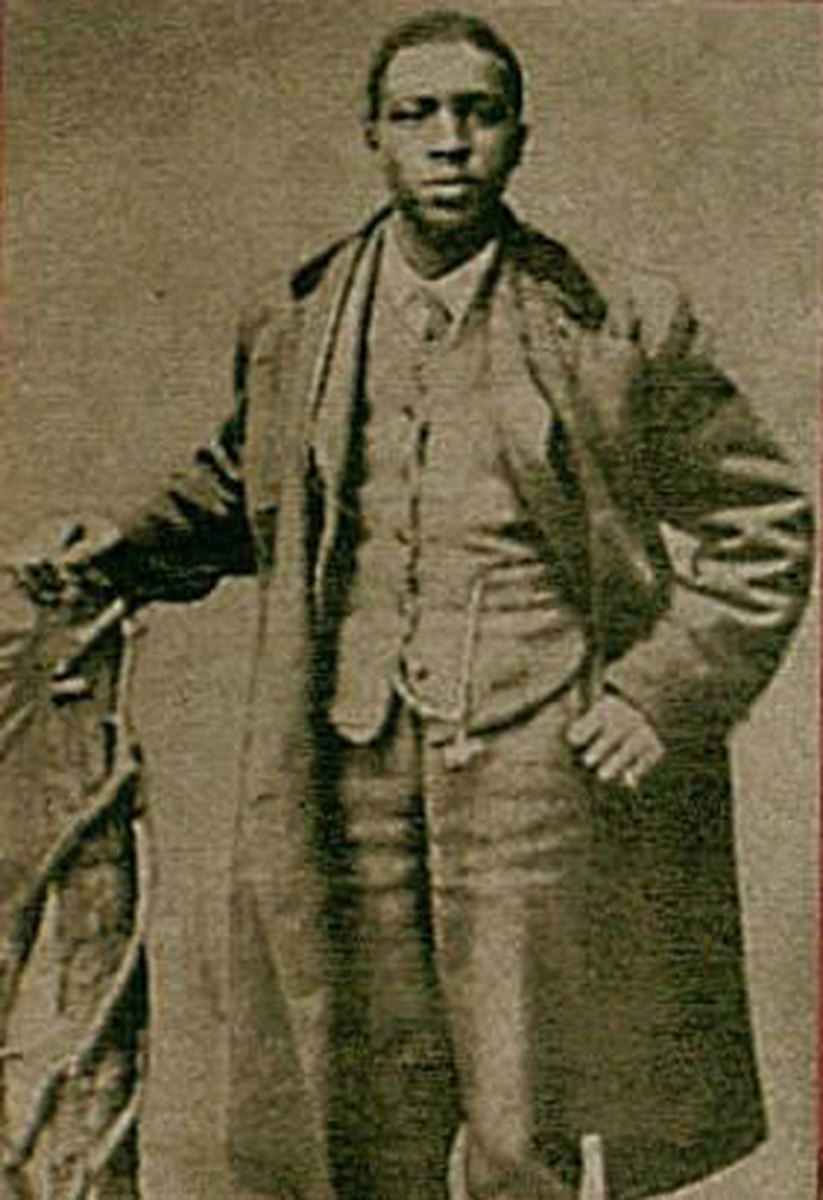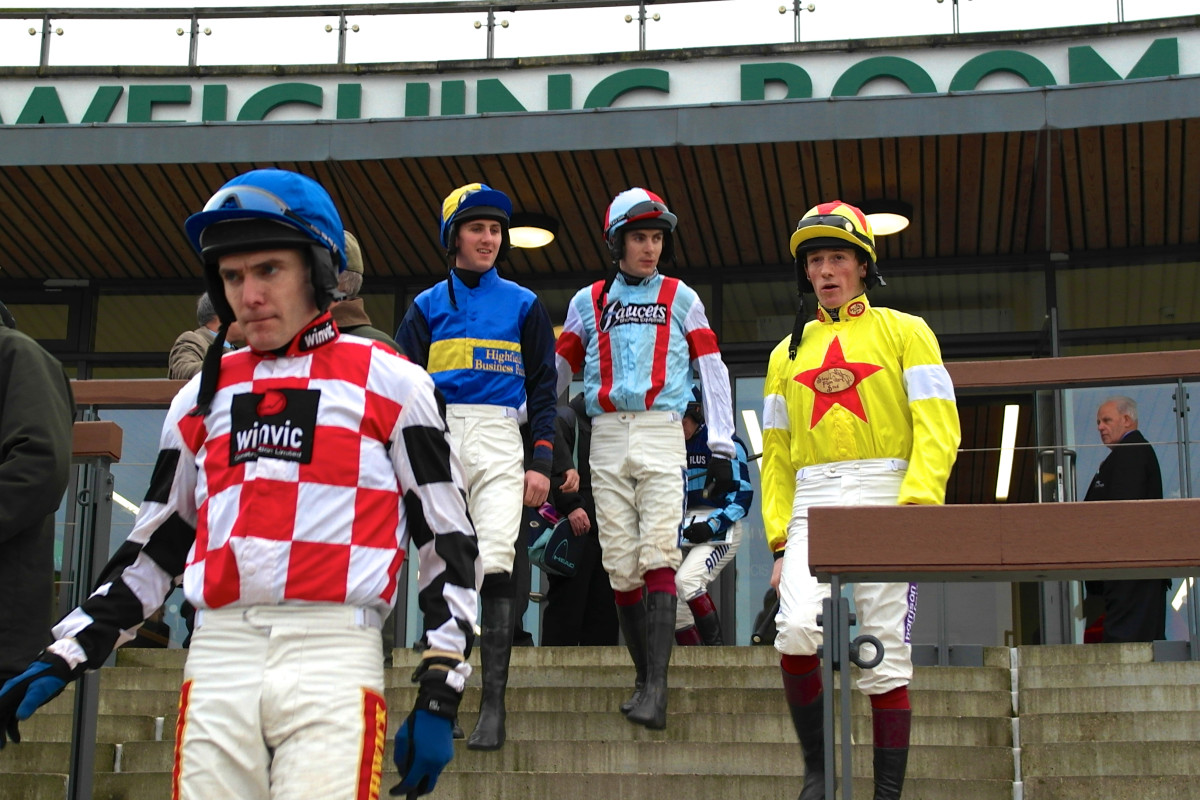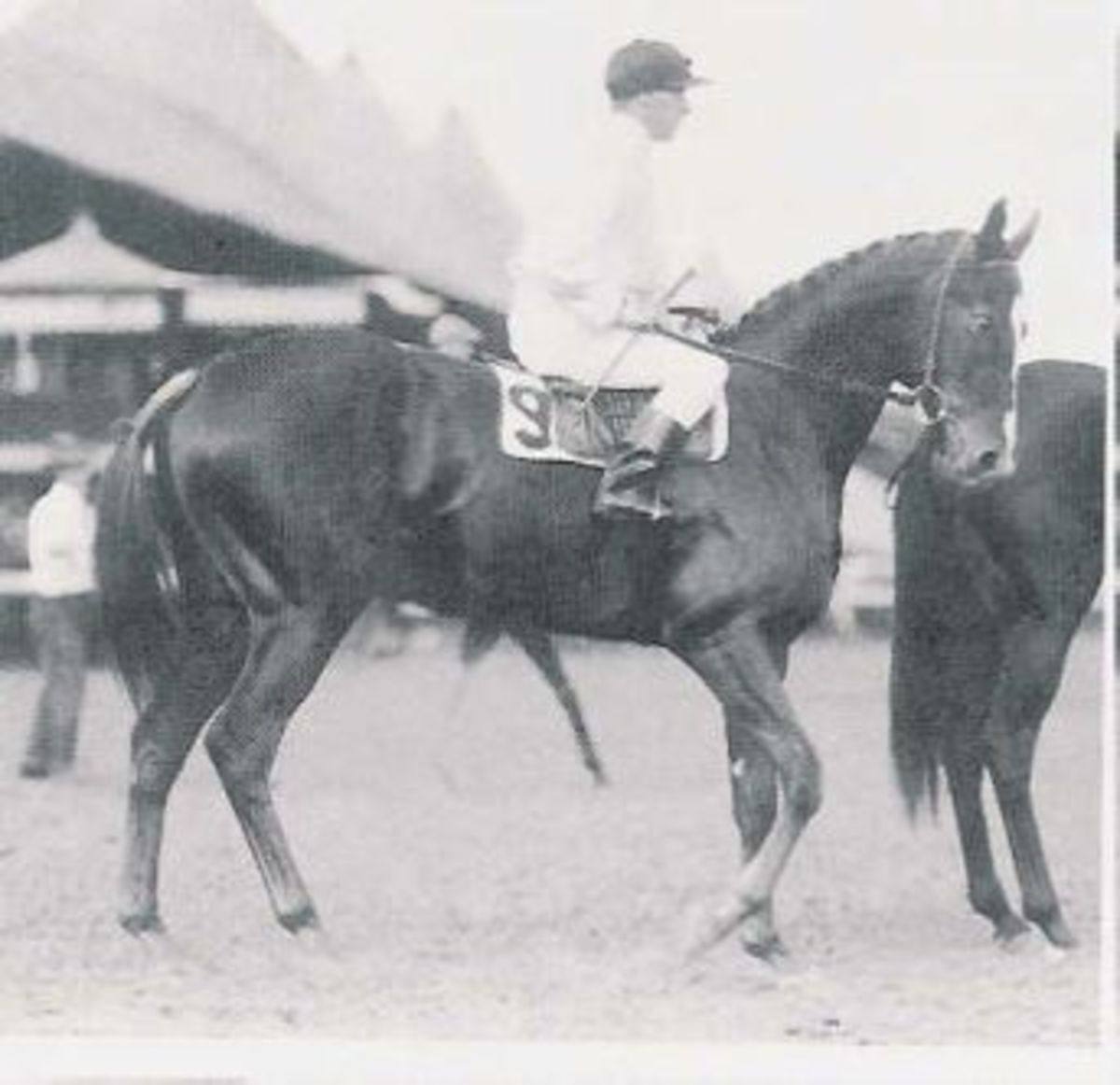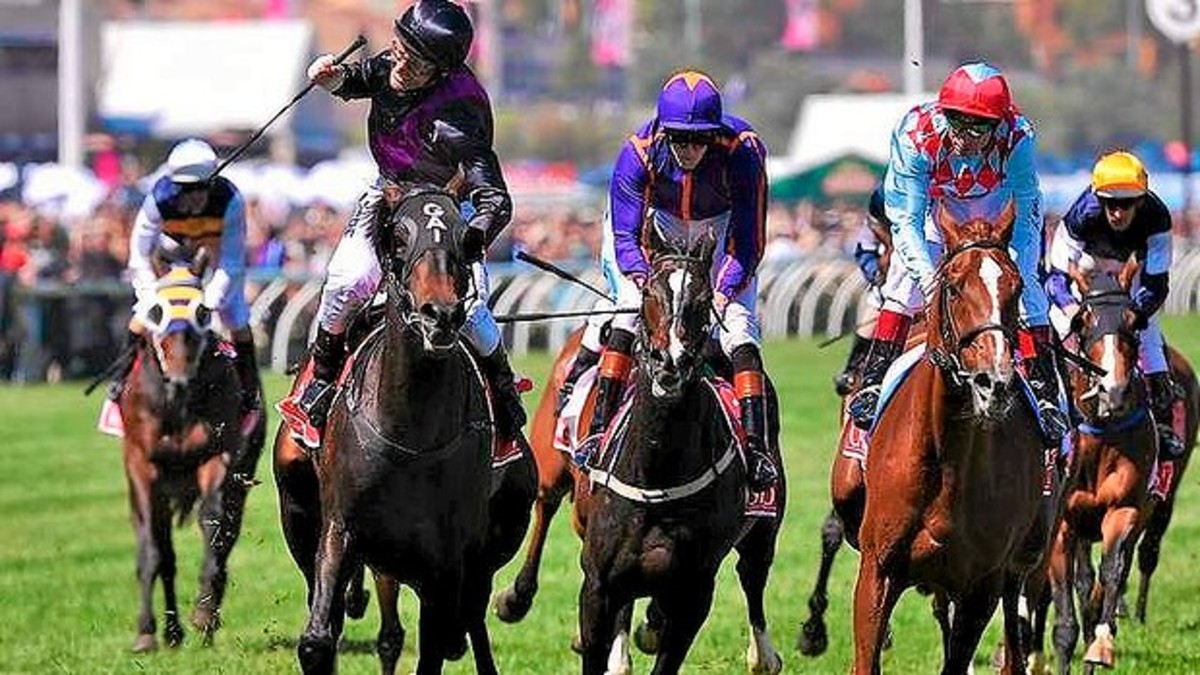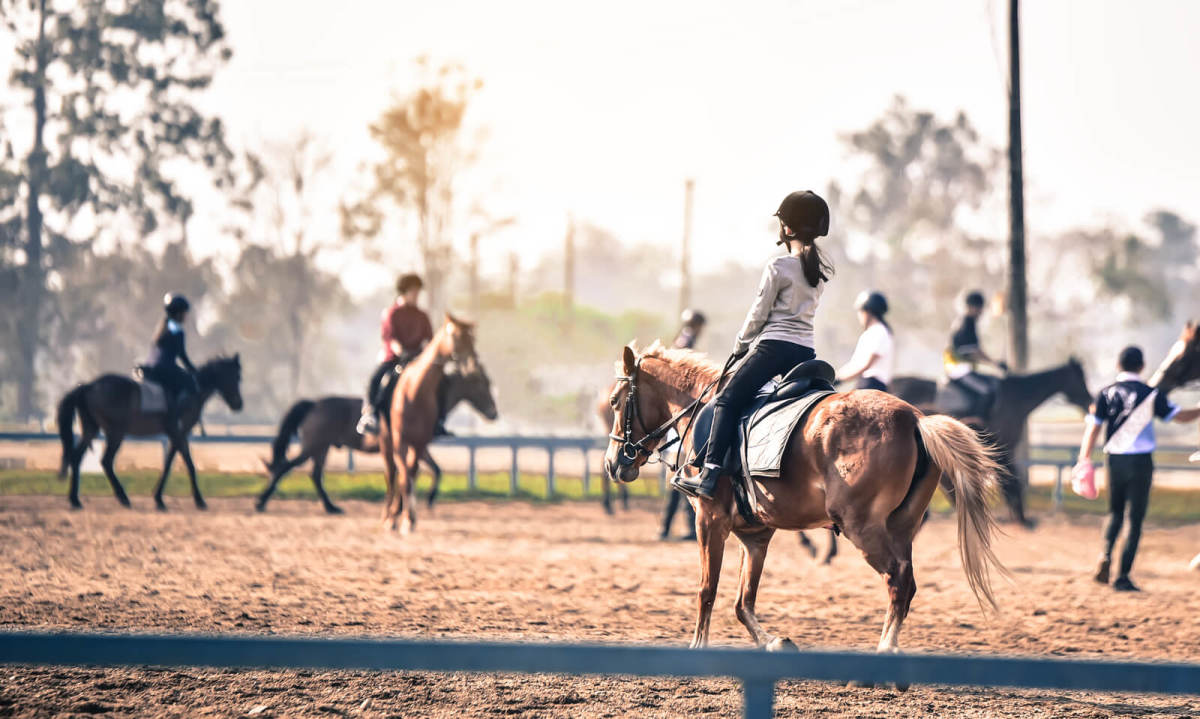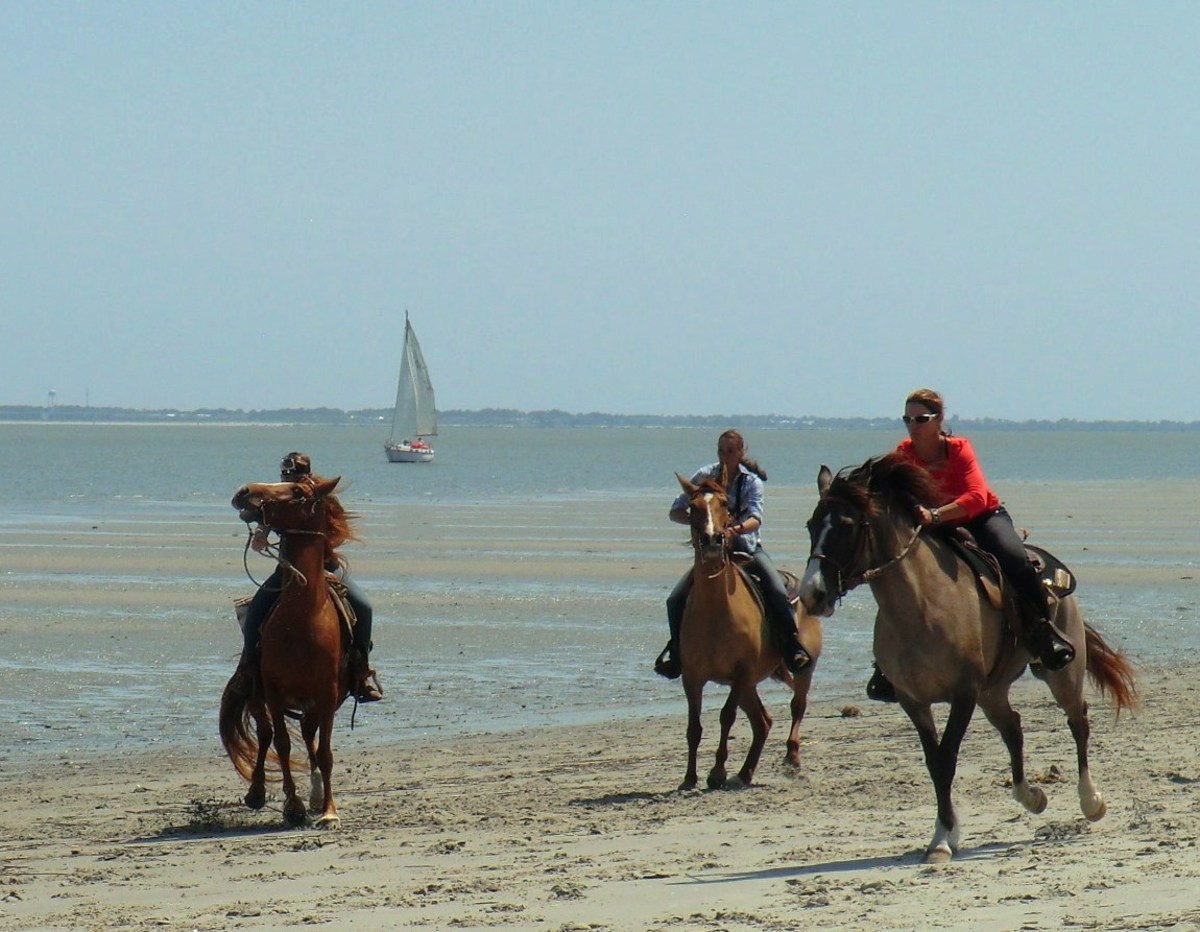Famous horse racing courses in England
All the months of planning, sleepless nights and heartaches are finally put in their true perspective when horses are put to the test on the course. There are 61 race-courses in Britain, all different, all with their own special qualities - some on hallowed ground, some with industrial backcloths, but all bustling with action and atmosphere.
Although the British courses all have grass surfaces, their conformations differ in the degree of the tightness of the bends, both left and right-handed, while some are practically level and others have varying undulations. This makes for a variety to racing unequalled anywhere else in the world.
The peculiarities of the weather mean that there can be a wide difference in the state of the going, ranging from concrete-like conditions to almost a bog. The choice of course is really so big that somewhere in the country there is one to suit every horse. Most of the leading courses in other countries, while generally having better facilities, do not offer this kind of variety, and as a result the racing often becomes stereo-typed and repetitious.
The majority of the courses in the United States have the same type of dirt running surface — ideal for centralised racing and training, but one which only caters for certain types of horses and causes more injuries than those experienced in Europe. It is not uncommon for horses in America to develop leg trouble during their two-year-old days. As a result, the vast majority of them have been fired or blistered at some stage of their careers. There are some courses steeped in history and others modern by comparison. This is a brief summary of the better known ones, plus the famous races by which they are known.
ASCOT
Although accepted as Britain's premier flat-race course, it does not stage one of the five classic races. Yet, the richest race in the country is held here during July and the King George VI and Queen Elizabeth Diamond Stakes has, since its conception in 1951, come to be recognised as the major test between three-year-olds and their elders during the summer.
The course is steeped in history, having held its first meeting in 1711 by the command of Queen Anne. In modem times the Royal meeting, spread over four days in June, is regarded as the highlight of the racing calendar, and visitors from all over the world flock to this delightful Berkshire course.
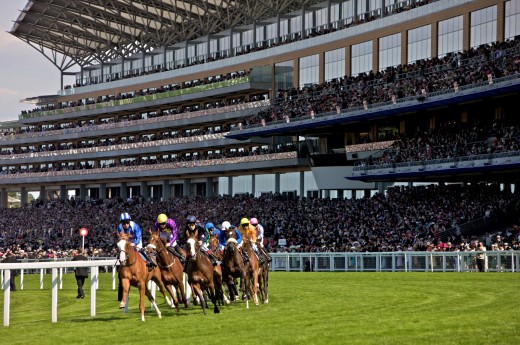
Each day‘s racing is preceeded by a drive down the course by the Royal party in open landaus. The atmosphere created is more in keeping with an aftemoon garden party—strawberries and all, but, despite all the counter attractions, such as the outlandish hats, the racing is usually so competitive that it makes compulsive watching.
ln prize money the Gold Cup is the pinnacle, yet all but the purists enjoy trying to solve the problems of the tricky handicaps which make up the Royal Hunt Cup and Wokingham Stakes. The Queen Alexandra Stakes, lirst run in 1865, is the longest race under jockey Club Rules in Britain (2 miles 6 furlongs) and is held at this meeting, while the five-furlong King's Stand Stakes attracts all the best sprinters in Europe.
EPSOM DOWNS
The home of the Derby and Oaks is unique in the world, for no other racecourse has so many different characteristics. Horses must be able to gallop both up and downhill and also keep on a true line in the straight where the ground slopes towards the inside rail.
The Derby was first run in 1780 and won by Sir Charles Bunbury's Diorned, who was later exported to the United States as a stallion and sired one of America's first great racehorses, Sir Archie (foaled 1805). Sir Charles Bunbury and the Earl of Derby instituted both Epsom classics — the Oaks is named after the Earl’s house — and the first Derby was run over a mile. It stayed at this distance for the first four years before being switched to its present mile and a half and the first winner over 12 furlongs was Col. D. O’Kelly’s Serjeant, by Eclipse.
The present Derby course was used for the first time in 1872 when the winner was Mr. H. Savile's Cremorne, who beat 22 rivals in a time of 2 min 45.1sec. Mahmoud holds the distinction of being the fastest winner when clocking 2 min 33-4/5 sec (35.06 mph.) in 1936. Fastest modern winner is Nijinsky, who recorded 2 min 34.68 sec in 1970.
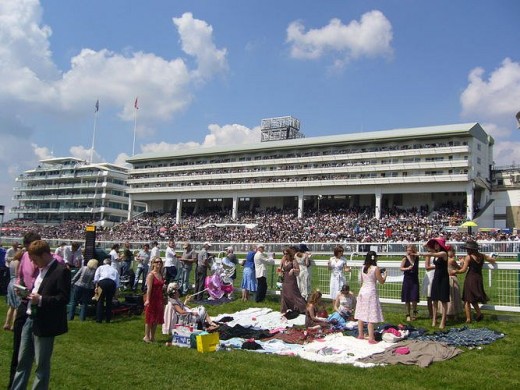
The present Derby course was used for the first time in 1872 when the winner was Mr. H, Savile's Cremorne, who beat 22 rivals in a time of 2 min 45 sec. Mahmoud holds the distinction of being the fastest winner when clocking 2 min 33-4/5 sec (35.06 m.p,h.) in 1936.
Proof that Epsom is one of the speediest courses in the world is that both horses credited to be the fastest over five furlongs by both hand timing and electric timing set their records there. Indigenous, when four-year-old, carried 9 st 5 lb to victory on june 2nd 1960, in 53-3/5 sec (41.97 m.p,h.) and Raffingora, when five, carried 10 st to victory on june Sth 1970, in 53.89 secs (41.75 m.p.h.) .Both were, incidentally, ridden by Lester Piggott, who set a Derby record in 1976 when Empery became his seventh winner of the race.
VOTE for your favourite race course
What's your favourite English racecourse?
The Oaks, restricted to fillies, is a year older than the Derby and has always been run over a mile and a half. Its first winner was Lord Derby's Bridget, but more famous are the four lilies who won both the Derby and Oaks. They were Eleanor (1801), Blink Bonney (1857), Signorinetta (1908) and Fifinella (1916). As the latter completed the double during World War I, when they were run at Newmarket, Signorinetta will probably go down in history as the last iilly to win both races at Epsom. She was owned and trained by Chevalier Ginistrelli, who arrived from Italy in about 1880 and started training at Newmarket.
Signorinetta won one race as a two-year-old and started at 100-1 for the Derby which she won by two lengths. Two days later she turned out for the Oaks and scored by a similar margin at 3-1. She subsequently ran three times unplaced. Derby Day in june has a special magic unequalled anywhere in the world, and thanks to television and modern technology, many countries are now able to enjoy the atmosphere of this great occasion.
Many critics consider the race to be held too early in the year for it to be the supreme test of the thoroughbred, as there have been many instances of better three-year-old colts than the Derby winner emerging later in the season. However, statistics prove that it is all a question of personal taste, for several modern Derby winners have gone on to capture the following seasorfs Coronation Cup as four-year-olds. This is run over the same distance and at the same time of the year to prove that there are not many sub-standard Derbys.
NEWMARKET
The open heathland around the small town was frequented by royalty in 1605 for hunting and hawking, and there are records of horses racing as far back as 1622. It continued in the reign of Charles ll (1630-1685), the Merry Monarch who enjoyed horseracing as well as other better known diversions from the affairs of state.
It was in 1683 that Charles 11 escaped an assassination plot through, what was for him, a fortunate occurrence in that the Town of Newmarket was gutted by fire causing racing to be abandoned and the royal return to London brought forward by several days. This caught the plotters at Rye House unprepared and they were eventually prosecuted and executed. ln 664 the Newmarket Town Plate was first run, possibly the oldest established race still going.
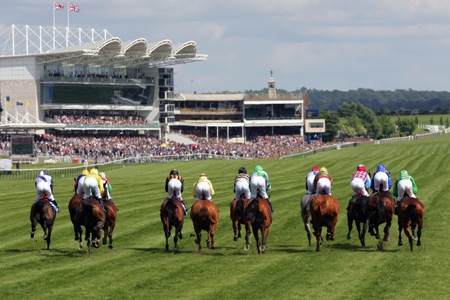
The King decreed that it 'be run on the second Thursday in October forever' and, wartime apart, his command has been obeyed. It is for amateur riders over three and threequarter miles and until recently was the only race in which women were allowed to compete against men. There is no money to be won, the prizes consisting of a quantity of sausages and riding equipment.
There was a partial decline in the 17th Century, but a recovery when Tregonwell Frampton was in charge of the royal racehorses during the reigns of the Monarchs from 1689 to 1750. There was a further resurgence of racing following the formation of the jockey Club in 1752 and the setting up of that body there.
Horse racing hubs
- Famous racehorses
The greatest racehorses throughout history won races in Britain, America, France and more. The horses include Man O'war, Bold Ruler, Ribot, Vaguely Noble, Nijinsky, Brigadier Gerard and Mill Reef among others. - Famous racehorses - part two
This second instalment of famous racehorses includes Dahlia, Grundy, Pawneese, Youth, Buckpasser, Secretariat and Allez France. - Famous racehorse owners
Queen Elizabeth, grandmother of Prince William and Harry, is a passionate horse racing fan and owns a large number of horses. Manchester United manager Sir Alex Ferguson also owns racehorses, as does striker and former David Beckham team-mate Michael - The greatest horse racing jockeys
These champion riders have gone down in history as some of the best ever. They include Pat Tasffe, Fred Winter, Willie Carson and Lester Piggott, Willie Shoemaker and Yves Saint-Martin. - The greatest racehorse trainers of all-time
Fred Rimell, Vincent O'Brien and Fulke Walwyn are just some of the incredible trainers that have produced some of finest racehorses in history. Their success - and the secrets of their training methods - is what every horse racing trainer around the - Red Rum: The greatest Grand National racehorse of all time
It was only after a chance encounter in a taxi that Red Rum was bought and began his racing life training on the beach with Ginger McCain. But in a truly amazing story he went on to be the most successful racehorse at Aintree of all time with three w - Famous horse races around the world
Maryland Hunt Cup, Grand Steeple-chase de Paris and the Grand National at Aintree are among some of the toughest and most well-known races in the world.
Newmarket racing continued to prosper into the 19th century with the first running of the two classic races and it continued to be the leading training centre although there was a drift away because of the hard ground on the heath in 1833 — perhaps it was a long, dry summer like 1976 — and there was a movement to increase the training quarters on the Downs of Wiltshire and Berkshire.
Racing was given another lift when the Prince of Wales registered his colours in 1875 and launched into ownership with considerable success towards the end of the century when, in 1896 his horse Persimmon, trained at Newmarket by Dick Marsh, won the Derby, again in 1900 when his horse, Diamond jubilee, took the Triple Crown, and yet again in 1909 — by then he was King Edward VII — he won the Derby with Minoru.
There are two courses, the Rowley Mile Course, which is used for all the most important race meetings with high value races, and the July Course for the less important meetings during mid-season. The long distance races of both courses start on the same track, but then they separate for the last mile of the july Course and the last one and a quarter miles of the Rowley Mile Course. The two finishing straights are separated by some open heath and by an ancient earthwork, the Devil's Ditch.
On the Rowley Mile Course there are tirst-class grandstand buildings, accommodation and facilities comparable with the best, but on the July course the accommodation leaves much to be desired. There are now 12 meetings staged each year with 27 days racing. The two classic races, the 2,000 Guineas, for three-year-old colts, was first run in 1809, and the 1,000 Guineas, for three-year-old fillies, was first run in 1814. Both races are over the straight Rowley Mile at the spring meeting. Towards the end of the season the two famous handicaps, which are referred to in racing circles as the Autumn Double, take place: The Irish Sweeps Cambridgeshire over one mile one furlong straight, and the S.K.F.
Cesarewitch Stakes (two and a quarter miles), both established in 1839. Newmarket has always been well to the fore in international racing and the Champion Stakes run at the end of the flat season is one of the most valuable races of the year. First run in 1877, it is over one and a quarter miles and attracts the best international horses over that distance year after year. It has sometimes gone to a classic winner, and was won in 1971-72 by Brigadier Gerard.
YORK
Used for flat racing only on 15 days each year with the principal meeting being in August and spread over three days. The course is level, well-drained and with a most up-to-date watering system when required, It is a flat, galloping track with sweeping bends and a first class test for genuine horses over any distance.
Horse racing in the district dates back as far as 1530, but the first record of racing on the present site dates from 1731. This site, the Knavesmire, was originally a marsh for the grazing of the comrnoners' cattle and is said to have been the location of the City gallows until 1802. It was one of the leading courses from the start, but it did suffer a decline in the early part of the 19th century until, in 1843, a new clerk of the course, Mr. R, M. Jaques, was appointed.
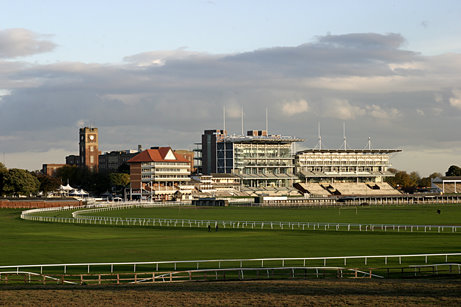
The appointment of Mr. Jaques heralded a new era of prosperity and, while no classic race is run here, the year of 1843 saw the inauguration of one of the important handicaps of the racing calendar, the Ebor Handicap of one and threequarter miles (the name is derived from Eboracurn, the Roman name for York) now the Tote Ebor Handicap.
The inauguration of the Gimcrack Stakes, now the C, & G. Gimcrack Stakes, followed in 1846. This is a six-furlong test for two-yearrolds, sometimes a trial for the classic races of the following year and won by Mill Reef in 1970. The winning owner of this race is the guest of honour and principal speaker at the Gimcrack Dinner held in York later in the year.
Other important races run are the Yorkshire Oaks, the William Hill Sprint Championship and the Benson and Hedges Gold Cup of one mile two and a half furlongs, a race inaugurated in 1972 which has attracted horses of world class each year and has elevated the course to international standing.

